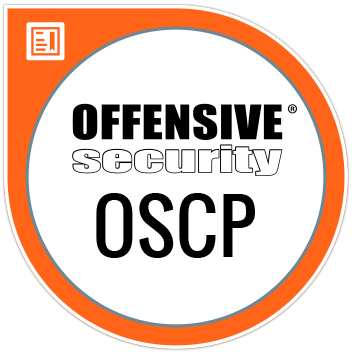The modern business landscape is undergoing a constant process of digital transformation, and SAP has been a strategic pillar for many organizations in this transition. However, with the 2027 end-of-support event for SAP ERP Central Component (ECC) products, migrating to S/4HANA is more than just an upgrade; it's an imperative.
In the following lines, we'll review strategies, critical considerations, and best practices to ensure that the move to S/4 Hana is a transformative investment and not just a technology migration.
SAP Migration Strategies
Selecting the right migration strategies is crucial to a successful S/4 Hana implementation. Common strategies include system conversion (“Brownfield“), the new implementation (“Greenfield“), and the combination of both (“Bluefield“).
- System conversion (Brownfield): This SAP migration strategy involves upgrading and converting the existing SAP system to S/4 HANA, keeping business processes, configurations, and historical data intact. It is ideal for organizations looking to minimize disruptions to their daily operations.
- All old processes and data are converted.
- It is possible that prior projects will need to be carried out.
- Incorporating innovations at the desired pace.
- New implementation (Greenfield): On the other hand, the Greenfield strategy focuses on a new implementation of S/4 Hana, allowing companies to reimagine their business processes from a digital perspective without the limitations of previous configurations. It is the preferred option for companies looking to digitally transform their operations and take full advantage of S/4 Hana's advanced capabilities from the start.
- Process reengineering and simplification.
- Standardized system.
- Migration of master data in SAP.
- Ensures innovations from the go-live.
- Hybrid strategy (Bluefield): Finally, the hybrid strategy combines elements of both approaches, allowing companies to upgrade certain components of their existing system while implementing new solutions and processes with S/4 Hana. This strategy is flexible and can be customized to meet the organization's specific needs.
- Combines reengineering with historical data.
- Standard functionality combined with specific functionality.
- No previous projects are necessary.
Choosing the right strategy depends on several factors, such as business objectives, current IT situation, readiness for change, and budgetary considerations. It's essential to conduct a detailed assessment before deciding on the path forward. Furthermore, it's important to keep in mind that the transition to S/4 Hana is not only a technology upgrade, but also a cultural change that requires the commitment and collaboration of all departments and employees.
Once the appropriate strategy has been decided, the next step is to carefully plan its implementation.
Technical and Non-Technical Considerations
Migrating to SAP S/4 Hana isn't simply a software upgrade; it affects the entire business, and there are a number of short- and long-term, technical and non-technical considerations that must be taken into account.
Technical Implications
The technical implications of migrating to S/4 Hana include the need to review and possibly redesign the existing IT architecture. This includes hardware compatibility, as S/4 Hana requires an infrastructure that can support its in-memory database for optimal performance. Furthermore, existing customizations in legacy software may not be directly transferable, requiring additional effort in reconfiguration or developing alternative solutions. Migrating to SAP also requires careful integration with other third-party solutions and applications to ensure business process continuity.
- Architecture and Technical Environment: Evaluate your current architecture and infrastructure to ensure they are compatible with S/4 Hana.
- Code Customization: Identify and reduce non-critical customizations to simplify SAP migration.
- Database: The database is critical to S/4 HANA performance. Decide whether to opt for an in-memory database like HANA or stick with your existing database.
- System integration: Evaluate and update integrations with other systems and applications.
Non-Technical Implications
On the non-technical side, migrating to SAP S/4 Hana significantly impacts change management within the organization. End-user training is crucial, as the new platform can differ significantly in terms of user interface and functionality compared to previous systems. Furthermore, the review of business processes can lead to changes in the organizational structure and employee roles. Finally, adopting S/4 Hana can also be an opportunity to reevaluate and optimize workflows and business practices, fostering a culture of innovation and continuous improvement.
- End User Adoption: A critical success factor is end-user adoption. Training and effective communication are essential.
- Change Management: Changing a mission-critical system like SAP requires careful change management. Resource planning, communication, and support are essential.
- Expected Business Results: Clearly define expected business outcomes to justify the investment and measure the success of the SAP migration.
In addition to these considerations, it's also important to have a clear migration strategy. Some possible approaches might include:
- Big Bang: In this approach, the entire company is migrated to S/4Hana at the same time. This can be risky, as any migration issues in SAP can affect the entire organization.
- Phased approach: In this approach, a gradual migration of different areas or processes within the company to SAP is carried out. This allows for a more controlled approach and reduces the risk of operational disruptions.
Parallel SAP migration: In this approach, S/4 HANA is implemented alongside the existing system, and testing and adjustments are performed before fully migrating to the new solution. This can be a safer option as it allows compatibility and functionality to be tested before performing the full SAP migration.
Regardless of the approach chosen, it's important to have a detailed plan and clearly communicate it to everyone in the organization. This will help ensure a smooth and successful transition to S/4 Hana.
Planning and Executing Migration in SAP
Planning is essential when migrating to S/4 Hana. Without a detailed and well-executed plan, SAP migration can become costly and complex. Let's delve into the steps required to develop an effective SAP migration plan that addresses all key aspects, ensuring a smooth transition to S/4 Hana. This comprehensive approach involves a thorough assessment of current systems, identification of potential challenges, stakeholder engagement, and strategic implementation strategies to optimize the SAP migration process and maximize benefits.
Process Evaluation and Data Preparation
Before migrating to SAP, it's crucial to thoroughly review and optimize your processes and prepare your data. This involves data cleansing, consolidation, and ensuring critical processes are aligned with S/4HANA best practices and standards. Taking the time to diligently address these aspects can significantly improve the success and efficiency of the SAP migration process, laying a solid foundation for a smooth transition to the new system.
Detailed Migration Plan
Develop a detailed plan that includes a logical sequence of steps, as well as clear responsibilities and deadlines. Each phase of the SAP migration should be tested and validated before moving on to the next.
User Training and Communication
The cultural impact and organizational change should not be underestimated. A proactive communications plan, aligned with a comprehensive training program, is essential to achieving end-user adoption and internal support.
Post-Migration Troubleshooting and Optimization
Even with the best planning, problems can arise during a migration to SAP S/4 HANA. The ability to react effectively and optimize your system after the migration is crucial.
Risk Management
It is necessary to identify and plan for mitigating technical, operational, and compliance risks that may arise during SAP migration.
Continuous Testing and Validation
Continuous testing and validation are essential to ensure the system is functioning as expected. Identifying challenges must be addressed quickly and ensure that your critical business processes are not impacted.
Business Continuity and Disaster Recovery
Business continuity and disaster recovery must be ensured in the context of S/4 HANA. Ensuring that critical processes and operations can be maintained or quickly recovered in the event of a disruption is critical.
Final Reflections
Migrating to SAP S/4 HANA is a momentous step that offers immense opportunities to innovate and revitalize your business environment. By adopting an informed strategy, dedicating resources to proper planning and preparation, and maintaining a focus on business results, your company could reap significant benefits throughout its SAP S/4 HANA journey.
It's crucial to remember that, beyond technical considerations, SAP migration is a process that involves your team and the entire organization. Effective change adoption, senior management support, and a continuous learning mindset will be just as important as choosing the right strategy or tools.
Additionally, it's essential to consider staff training on the new technologies and procedures associated with S/4 Hana. Proper training will ensure your team is prepared to take full advantage of this innovative platform's capabilities, thereby maximizing your return on investment and improving long-term productivity. By investing in the right training, your company will be ready to face future challenges and stay ahead of the competition.
In conclusion, by properly preparing, adopting a change mindset, and working collaboratively with SAP and other SAP migration experts, you can ensure a successful transition to S/4 HANA. This will not only improve your company's efficiency and productivity but also position it to take advantage of opportunities and face future challenges in an increasingly digital business world.
See you next time!
Discover our SAP training
Find out everything on our blog and train in SAP with our Master in Financial Management and Functional Consulting SAP S/4HANA Finance, Official Sap S/4Hana Sourcing And Procurement Certificate and Sap S/4Hana Finance Official Certificate.


































